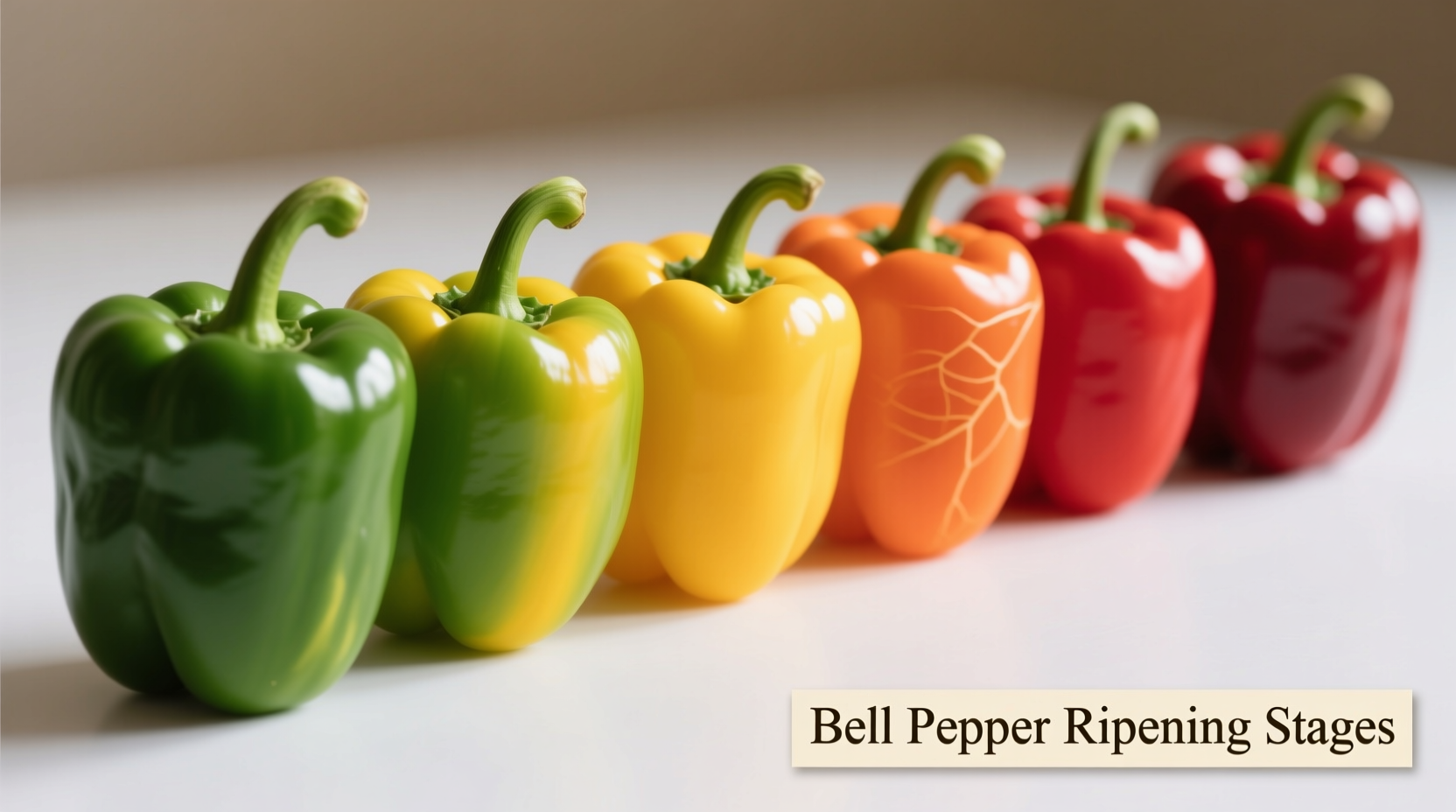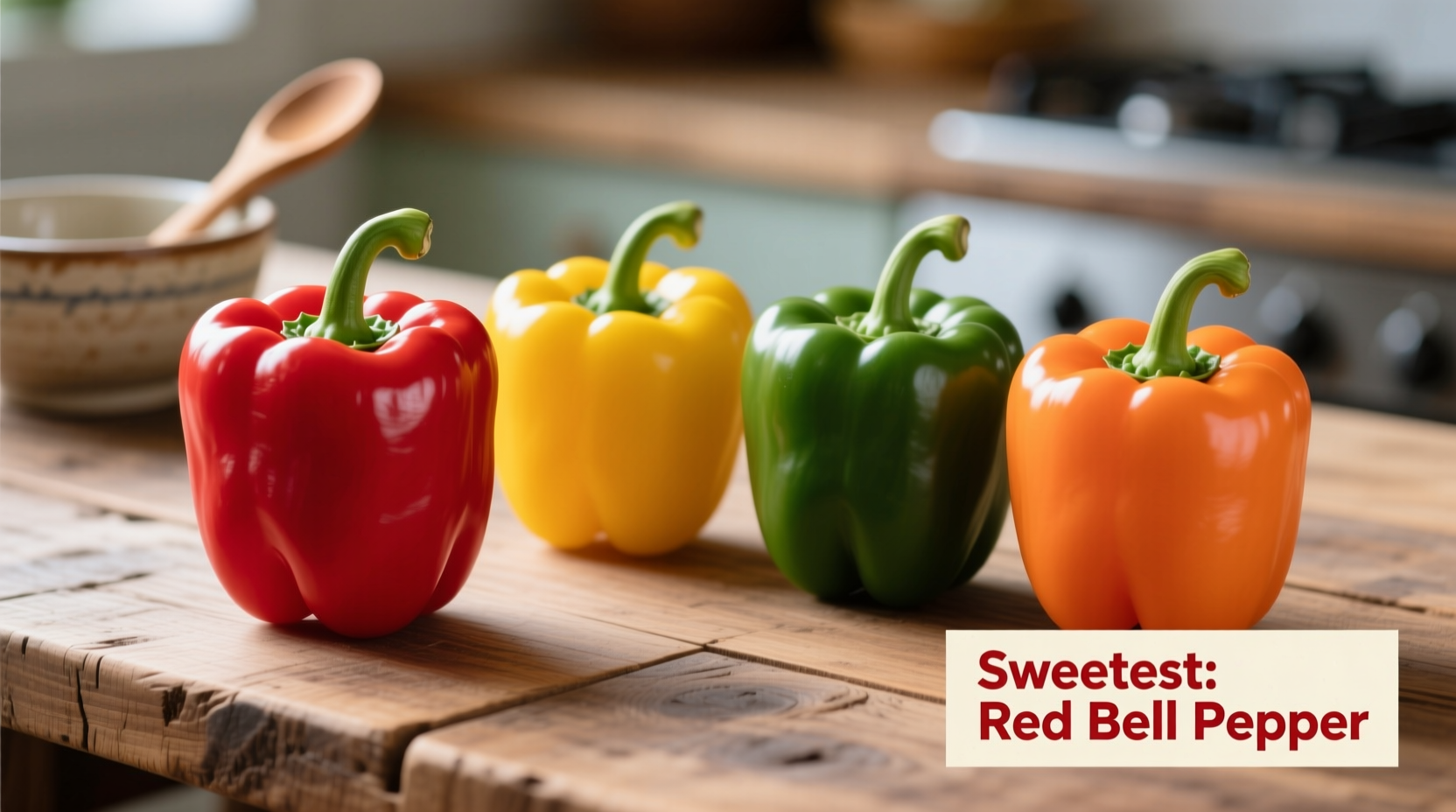When you're reaching for bell peppers at the grocery store, understanding which color delivers the most sweetness can transform your dishes from bland to brilliant. While many assume yellow peppers reign supreme in sweetness, the truth lies with their fully ripened red counterparts. Let's explore why red bell peppers deserve the crown for sweetness and how to leverage this knowledge in your cooking.
The Science Behind Bell Pepper Sweetness
Bell peppers undergo a remarkable transformation as they mature on the vine. Starting as green peppers (which are actually unripe), they gradually develop sugars while chlorophyll breaks down. This ripening process follows a predictable color spectrum:
| Color Stage | Ripeness Level | Sugar Content | Days to Maturity |
|---|---|---|---|
| Green | Unripe | 2-3% | 60-70 days |
| Yellow | Partially ripe | 4-5% | 75-85 days |
| Orange | Mostly ripe | 5-6% | 85-95 days |
| Red | Fully ripe | 6-8% | 90-100+ days |
This ripening timeline, documented by the University of Minnesota Extension, shows how sugar content steadily increases as bell peppers mature. The additional 20-30 days required for red peppers to fully develop translates directly to higher sugar concentration.
Why Red Bell Peppers Taste Sweeter
The sweetness difference isn't just about sugar percentage. As bell peppers ripen:
- Chlorophyll breaks down, reducing bitter compounds
- Carotenoids develop, enhancing flavor complexity
- Starches convert to simple sugars through enzymatic activity
- Vitamin C content increases by up to 50% compared to green peppers
According to research published in the Journal of Agricultural and Food Chemistry, the sugar-to-acid ratio shifts dramatically during ripening. While green peppers maintain higher acidity that masks sweetness, red peppers achieve the optimal balance where natural sugars become the dominant flavor profile.

Practical Selection Guide for Sweetest Bell Peppers
When shopping for the sweetest bell peppers, look for these characteristics:
Visual Indicators
- Vibrant, uniform red color without green streaks (indicates complete ripening)
- Glossy, taut skin that reflects light evenly
- Four distinct lobes at the base (often indicates better developed flavor)
Tactile Indicators
- Firm, heavy feel for their size (more water and sugar content)
- Crisp sound when gently squeezed
- Sturdy stem that's still green and moist
Seasonal availability affects sweetness too. During peak summer months (June-August in North America), bell peppers naturally develop higher sugar content due to optimal growing conditions. The USDA FoodData Central confirms that summer-harvested red bell peppers contain up to 25% more sugar than those grown in cooler months.
Culinary Applications for Maximum Sweetness
To fully appreciate the sweetness of red bell peppers:
Raw Applications
Enjoy red bell peppers raw in salads, crudités, or as pizza toppings where their natural sugars shine without cooking interference. The Cornell University Department of Horticulture notes that raw red peppers maintain their highest sugar concentration, making them ideal for fresh applications.
Cooking Techniques
- Roasting: Concentrates natural sugars through caramelization
- Grilling: Creates delicious char marks that complement sweetness
- Slow sautéing: Allows sugars to develop without burning
Avoid boiling red bell peppers, as this water-based cooking method leaches sugars into the cooking liquid. For best results, use oil-based cooking methods that preserve and enhance natural sweetness.
Common Misconceptions About Bell Pepper Sweetness
Several myths persist about bell pepper sweetness:
- Myth: Yellow peppers are sweeter than red
Fact: While yellow peppers have noticeable sweetness, red peppers contain significantly higher sugar content - Myth: All red bell peppers are equally sweet
Fact: Sweetness varies by growing conditions, with vine-ripened peppers being noticeably sweeter than those picked green and ripened off-vine - Myth: Sweetness indicates higher sugar calories
Fact: Even the sweetest red bell pepper contains only about 4.2g of sugar per 100g, making it an excellent low-sugar option
Understanding these distinctions helps you make informed choices whether you're managing dietary needs or simply seeking the best flavor for your recipes.
Storage Tips to Maintain Sweetness
Proper storage preserves the hard-earned sweetness of your bell peppers:
- Store whole peppers in the crisper drawer of your refrigerator
- Keep away from ethylene-producing fruits like apples and bananas
- Use within 1-2 weeks for peak sweetness (sugar content gradually decreases in storage)
- Never wash before storing, as moisture accelerates spoilage
For longer storage, slice and freeze red bell peppers for cooked applications. While freezing slightly alters texture, it preserves most of the sugar content for future use in sauces, soups, and cooked dishes.
When to Choose Other Colors
While red bell peppers win for pure sweetness, other colors have their place:
- Green peppers: Best for dishes needing crisp texture and mild bitterness (fajitas, stir-fries)
- Yellow peppers: Ideal when you want noticeable sweetness without strong red coloration (light-colored sauces, mixed vegetable dishes)
- Orange peppers: Perfect balance for recipes needing both sweetness and vibrant color (stuffed peppers, roasted vegetable medleys)
Your recipe's flavor profile and visual requirements should guide your selection, but when sweetness is the priority, red bell peppers consistently deliver the highest natural sugar content.











 浙公网安备
33010002000092号
浙公网安备
33010002000092号 浙B2-20120091-4
浙B2-20120091-4